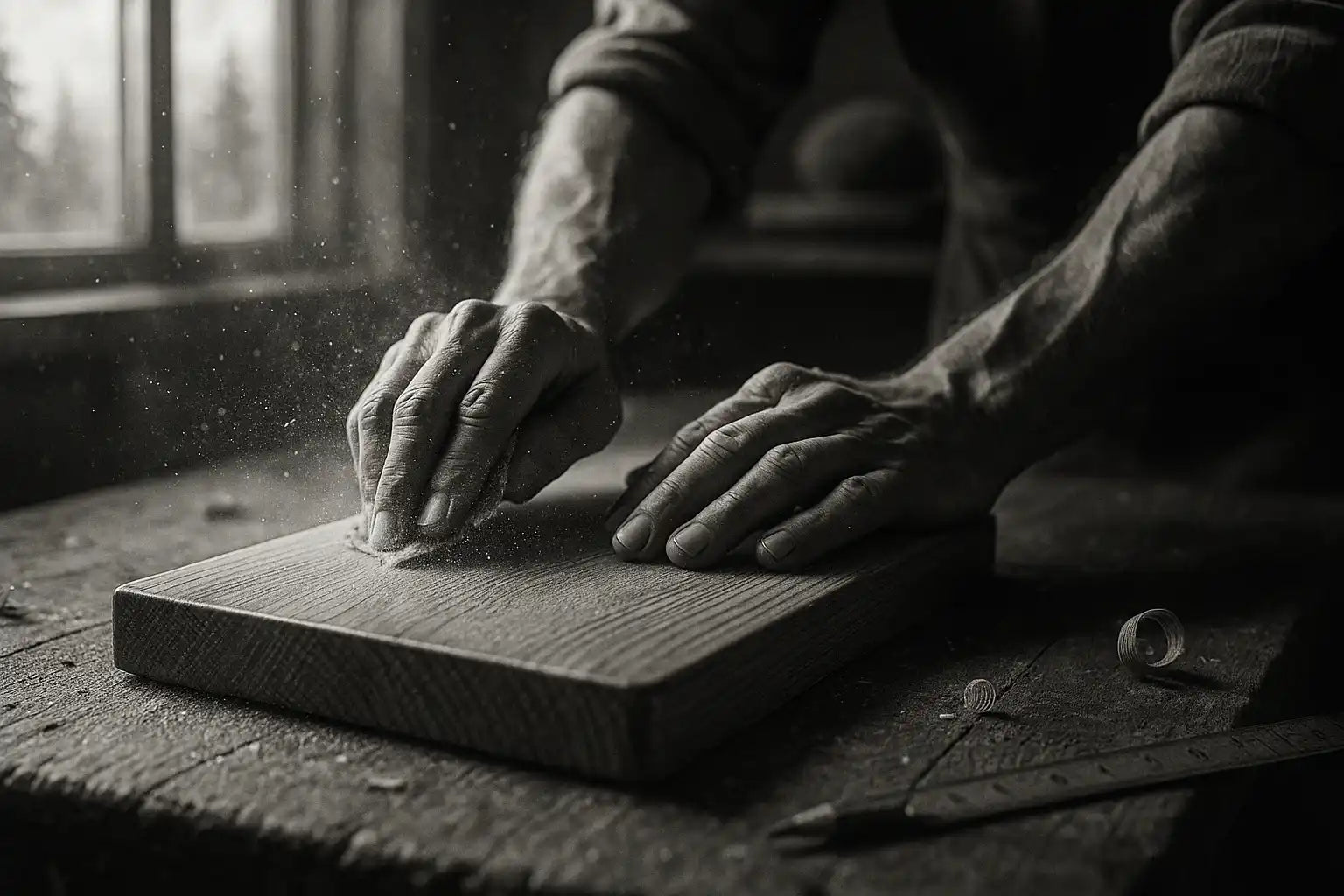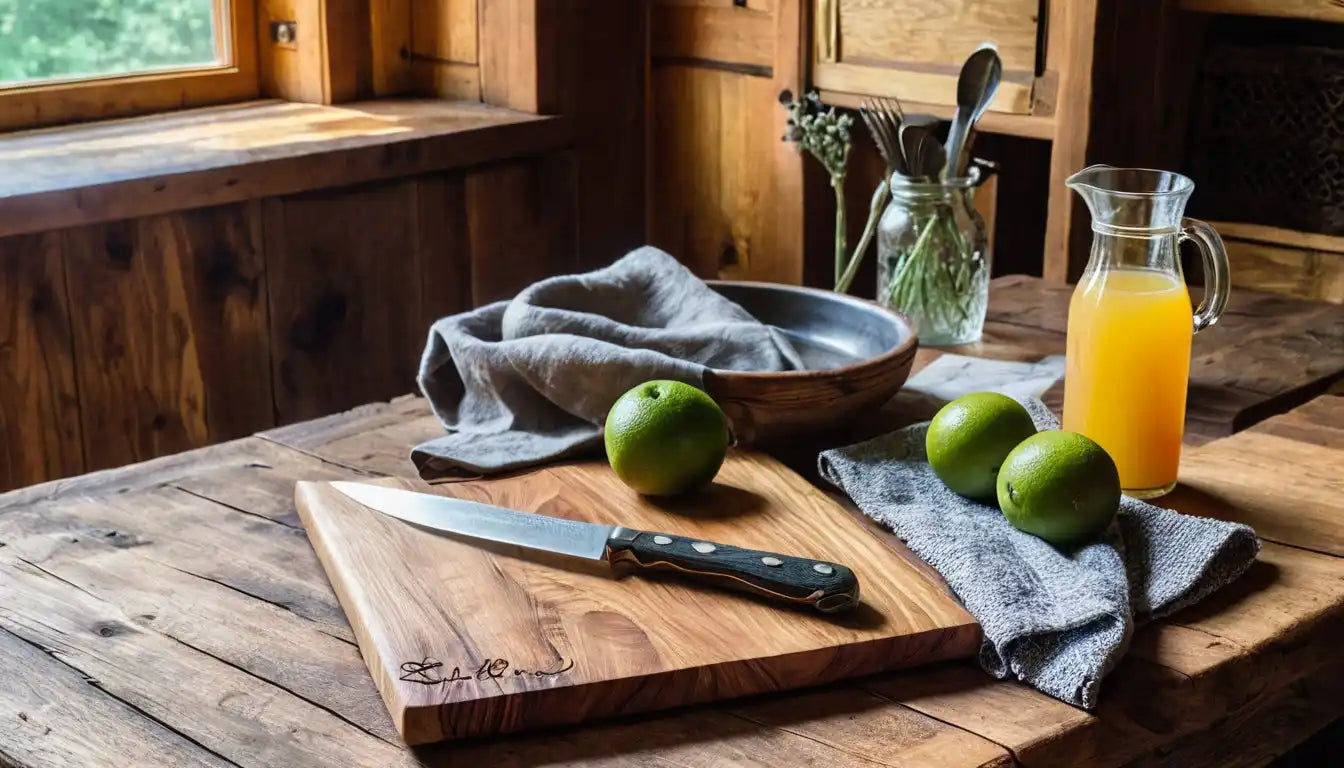A high-quality cutting board is characterized by three things: the right material, well-thought-out functionality, and a construction that will last. We use solid oak and walnut wood – natural, robust, antibacterial, and gentle on knives. Our cutting boards are 4 cm thick, making them noticeably more stable than many commercially available models. No warping, no slipping – just a reliable work surface that will last for decades.
Our boards also make a difference in terms of functionality: a precisely milled juice groove, double-sided usability, and, depending on the model, practical recessed handles or stainless steel elements ensure that the board becomes a real tool – in the kitchen, at the grill, or on the buffet.
We have developed four well-thought-out board lines for different requirements:
Chef board – The robust kitchen board
Compact, functional, and versatile: Our 30 × 30 cm and 40 × 30 cm chef's boards are ideal for everyday use in the kitchen—for cutting vegetables, meat, or herbs. Solid wood combines clean lines and high-quality craftsmanship.
For the robust chef's board for the kitchen (also suitable as a burger & steak board)
Chef Board XL – For grill, BBQ & large cuts
The 50 × 40 cm and 60 × 40 cm versions offer generous space for large pieces of meat, roasts, or pulled pork. Perfect for grilling, preparing, and serving—sturdy, cut-resistant, and with plenty of presence.
To the BBQ & Grill chef board for carving and serving
The Chefstation – More than just a board
Our Chefstation is a modular system for professional demands: 4 cm thick oak, combined with removable GN containers, a stainless steel console, and an optional hygienic countertop. The perfect solution for structured preparation, clean work, and efficient processes – whether in the kitchen, at a BBQ, or catering.
To the boss station - where work becomes a pleasure
Steak & Burger Boards – For a stylish appearance
More compact than the Chef's Board, but no less impressive: The steak and burger boards combine aesthetics with functionality – with a milled juice groove, recessed handles, and a refined wood texture. Ideal for serving meat, burgers, or small meals – straight from the grill to the table.
To the Steak & Burger Board - present and enjoy becomes the motto
Our cutting boards are handcrafted with passion for materials, form, and function. They are made for people who want to experience quality, who shop consciously, and who value durable tools. Not mass-produced goods—just honest products that last.
Discover all cutting boards at a glance






















